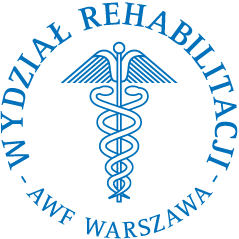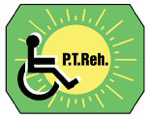


|
Current issue
Archive
Manuscripts accepted
About the journal
Editorial board
Reviewers
Abstracting and indexing
Contact
Instructions for authors
Publication charge
Ethical standards and procedures
Editorial System
Submit your Manuscript
|
4/2022
vol. 36 Original article
Effect of high-intensity interval training versus moderate-intensity continuous training on plasminogen activator inhibitor-1 in Type 2 diabetic women
Ahmad Mahdi Ahmad
1
,
Faten Ali
2
,
Heba Mohammed Ali
3
Advances in Rehabilitation, 2022, 36(4), 17–23
Online publish date: 2022/12/08
Article file
- 2022-04-ar-03-popr.pdf
[0.53 MB]
ENW EndNote
BIB JabRef, Mendeley
RIS Papers, Reference Manager, RefWorks, Zotero
AMA
APA
Chicago
Harvard
MLA
Vancouver
1. International Diabetes Federation. IDF Diabetes Atlas, 10th ed n. Brussels,Belgium: 2021. Available from: https://www.diabetesatlas.org 2. American Diabetes Association. 2.
Classification and Diagnosis of Diabetes: Standards of Medical Care in Diabetes 2021. Diabetes Care. 2021; 44(Suppl 1): S15-S33. 3.
Cosentino F, Ceriello A, Baeres FMM, Fioretto P, Garber A, Stough WG, et al. Addressing cardiovascular risk in Type 2 diabetes mellitus: a report from the European Society of Cardiology Cardiovascular Roundtable. Eur Heart J. 2019; 40(34): 2907-19. 4.
Huebschmann AG, Huxley RR, Kohrt WM, Zeitler P, Regensteiner JG, Reusch JEB. Sex differences in the burden of Type 2 diabetes and cardiovascular risk across the life course. Diabetologia. 2019; 62(10): 1761-72. 5.
Ajjan RA, Kietsiriroje N, Badimon L,Vilahur G, Gorog DA, Angiolillo DJ. Antithrombotic therapy in diabetes: which, when, and for how long? Eur Heart J. 2021; 42(23): 2235-59. 6.
Buchan DS, Ollis S, Young JD, Thomas NE, Cooper SM, Tong TK, et al .The effects of time and intensity of exercise on novel and established markers of CVD in adolescent youth. Am J Hum Biol. 2011; 23(4): 517-26. 7.
Esmat S, Abd Al Salam RF, Rashed L. Effect of Exercise on Plasminogen acivator inhibitor-1 (PAI-1) level inpatients with metabolic syndrome. J Am Sci. 2010; 6(12): 1374-80. 8.
Camarillo-Romero E, Dominguez-Garcia MV, AmayaChavez A, Camarillo-Romero Mdel S, Talavera-Pińa J, Huitron-Bravo G, et al. Effects of a Physical Activity Program on Markers of Endothelial Dysfunction, Oxidative Stress, and Metabolic Status in Adolescents with Metabolic Syndrome. ISRN Endocrinol. 2012; 2012: 970629. 9.
Khalil OA, Sherif MM, Ghoniem ME, Fahmy D, Fawzy MS. Effect of aerobic exercises on blood coagulation and fibrinolytic system in Type 2 diabetic patients. IJAR. 2015; 3(5): 64-70. 10.
Rezaeimanesh, D. The effects of high intensity interval training on fibrinolytic factors, D-dimer, and fibrinogen in men with Type 2 diabetes. Arch Pharma Pract. 2020; 11 suppl 1: S154-60. 11.
Praet FE, van Loon JC. Optimizing the therapeutic benefits of exercise in Type 2 diabetes. J Appl Physiol. 2007; 103(4): 1113-20. 12.
Fletcher GF, Ades PA, Kligfield P, Arena R, Balady GJ, Bittner VA, et al. American Heart Association Exercise, Cardiac Rehabilitation, and Prevention Committee of the Council on Clinical Cardiology, Council on Nutrition, Physical Activity and Metabolism, Council on Cardiovascular and Stroke Nursing, and Council on Epidemiology and Prevention. Exercise Standards for Testing and Training. A Scientific Statement From the American Heart Association. Circulation. 2013; 128(8): 873-934. Advances in Rehabilitation, 2022, 36(4), 17–23 23 13.
Nuttall FQ. Body Mass Index: Obesity, BMI, and Health: A Critical Review. Nutr Today. 2015; 50(3): 117-28. 14.
American College of Sports Medicine. ACSM’s Guidelines for Exercise Testing and Prescription. 10th ed. Philadelphia: Lippincott Williams & Wilkins; 2016. 15.
Ahmad AM, Ali HM. Comparative effects of two exercise training programs on health-related quality of life in middle-aged women with non-alcoholic fatty liver disease. Adv rehab. 2020; 34(4): 1-10. 16.
Kanaley JA, Colberg SR, Corcoran MH, Malin SK, Rodriguez NR, Crespo CJ, et al. Exercise/Physical Activity in Individuals with Type 2 Diabetes: A Consensus Statement from the American College of Sports Medi cine. Med Sci Sports Exerc. 2022; 54 (2): 353-68. 17.
Lira FS., Rosa JC, Lima-Silva AE, Souza HA et al. Sedentary subjects have higher PAI-1 and lipoproteins levels than highly trained athletes. Diabetol Metab Syndr. 2010; 2: 7. 18.
Hittel DS, Kraus WE, Hoffman EP. Skeletal muscle dictates the fibrinolytic state after exercise training in overweight men with characteristics of metabolic Syndrome. J Physiol. 2003; 548(2): 401-10. 19.
Rikitake Y, Liao JK. Rho-kinase mediates hyperglycemia-induced plasminogen activator inhibitor-1expression in vascular endothelial cells. Circulation. 2005; 111(24): 3261-8. 20.
Belalcazar LM, Ballantyne CM, Lang W, Haffner SM, Rushing J, Schwenke DC, et al. Look action for health in diabetes research group. Metabolic factors, adipose tissue, and plasminogen activator inhibitor-1 levels in Type 2 diabetes: findings from the Look AHEAD study. Arterioscler Thromb VascBiol. 2011; 31(7): 1689-95. 21.
de Mello MB, Righi NC, Schuch FB, Signori LU, da Silva AMV. Effect of high-intensity interval training protocols on VO2max and HbA1c level in people with Type 2 diabetes: A systematic review and meta-analysis. Ann Phys Rehabil Med. 2022; 65(5): 101586. 22.
Colberg SR, Sigal RJ, Yardley JE, Riddell MC, Dunstan DW, Dempsey PC, et al. Physical activity/exercise and diabetes: a position statement of the American Diabetes Association. Diabetes Care. 2016; 39(11): 2065-79. 23.
American Diabetes Association. 5. Facilitating Behavior Change and Well-being to Improve Health Outcomes: Standards of Medical Care in Diabetes 2021. Diabetes Care. 2021; 44(Suppl 1): S53-S72. 24.
Shambrook P, Kingsley M, Taylor N, Gordon B. Accumulated or continuous exercise for glycaemic regulation and control: a systematic review with metaanalysis. BMJ Open Sport Exerc Med. 2018; 4(1): e000470. 25.
Stanford KI, Goodyear LJ. Exercise and Type 2 diabetes: molecular mechanisms regulating glucose uptake in skeletal muscle. Adv Physiol Educ. 2014; 38(4): 308-14. 26.
Meex RC, Schrauwen-Hinderling VB, Moonen-Kornips E, Schaart G, Mensink M, Phielix E, et al. Restoration of muscle mitochondrial function and metabolic flexibility in Type 2 diabetes by exercise training is paralleled by increased myocellular fat storage and improved insulin sensitivity. Diabetes. 2010; 59(3): 572-9. 27.
Jensen TE, Sylow L, Rose AJ, Madsen AB, Angin Y, Maarbjerg SJ, et al. Contraction-stimulated glucose transport in muscle is controlled by AMPK and mechanical stress but not sarcoplasmatic reticulum Ca2+ release. Mol Metab. 2014; 3(7): 742-53. 28.
Hong YH, Betik AC, McConell GK. Role of nitric oxide in skeletal muscle glucose uptake during exercise. Exp Physiol. 2014; 99(12): 1569-73. 29.
Koshinaka K, Kawamoto E, Abe N, Toshinai K, Nakazato M, Kawanaka K. Elevation of muscle temperature stimulates muscle glucose uptake in vivo and in vitro. J Physiol Sci. 2013; 63(6): 409-18
This is an Open Access journal, all articles are distributed under the terms of the Creative Commons Attribution-NonCommercial-ShareAlike 4.0 International (CC BY-NC-SA 4.0). License (http://creativecommons.org/licenses/by-nc-sa/4.0/), allowing third parties to copy and redistribute the material in any medium or format and to remix, transform, and build upon the material, provided the original work is properly cited and states its license.
|
    |